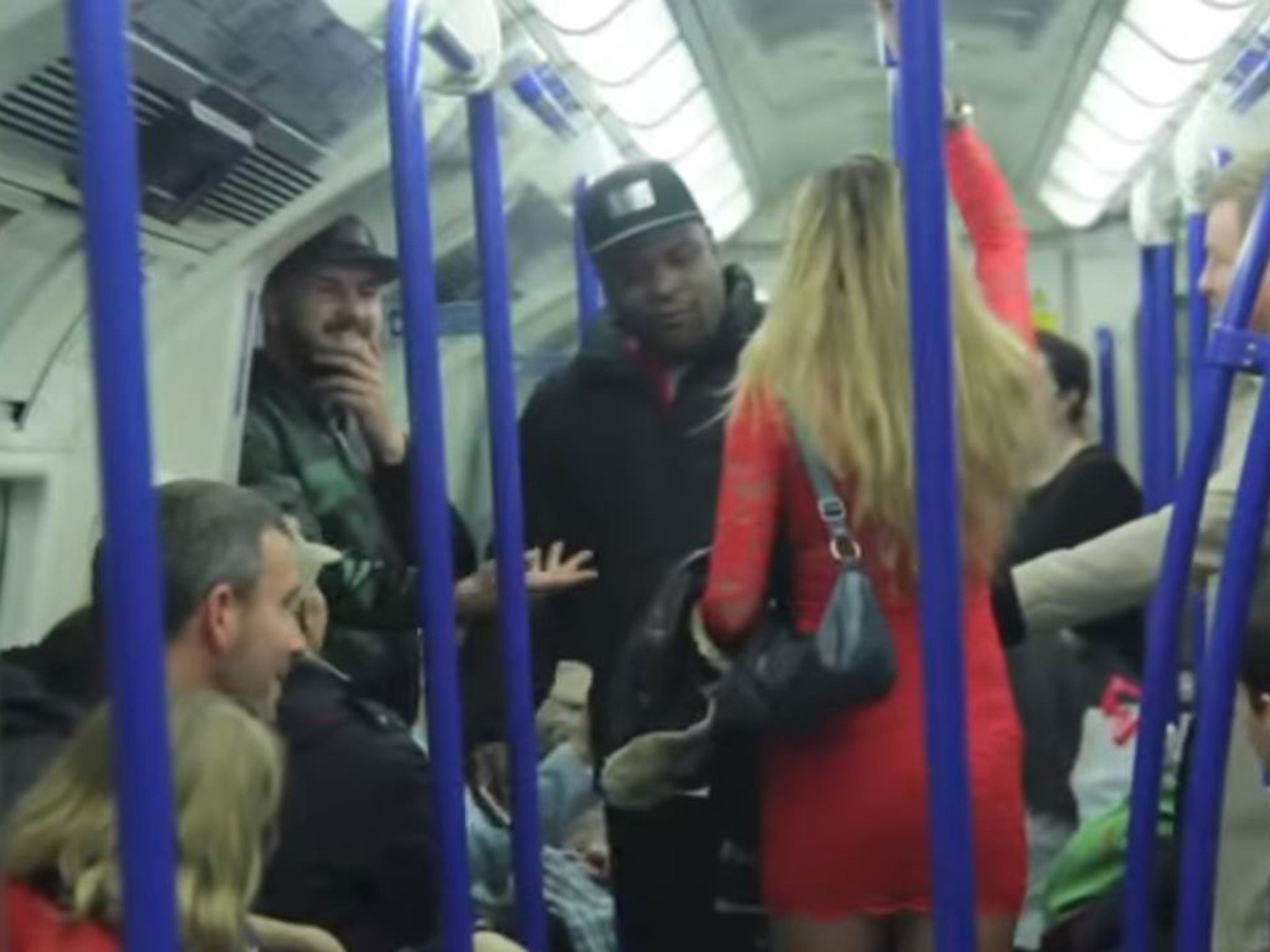Trollstation: YouTube channel's hoax videos test public reaction to racist and sexist abuse - but could they backfire?
How long before the staged scenes lead to real drama, asks Chloë Hamilton

The tube train is packed. It looks like rush hour. Weary commuters are crammed up against the smeary glass, all avoiding eye contact. A man approaches a woman in a red dress and asks for her number. The woman politely refuses. Disgruntled and bruised, the man begins to insult her appearance, calling her a "stick insect" and "disgusting". He gets more and more aggressive, pointing and shouting in the woman's face. Save for a few prying glances and a couple of half-hearted comments, the rest of the passengers stay silent, eyes fixed resolutely on their newspapers.
This scene is from the latest prank video released by UK-based YouTube channel Trollstation last week. The channel has become renowned for its hoax videos, which test bystanders' reactions to bullying, racism, violence and – as in this case – body shaming. The actors are all in on the gag and the stunts are always revealed to be pranks.
So what's new? People have been making prank videos since the TV show Candid Camera launched in the USA in 1948 with a simple premise: concealed cameras were used to film ordinary people being confronted by extraordinary situations. When the joke was finally revealed, the prankster would tell the victim: "Smile, you're on Candid Camera!" (which soon became the show's catchphrase).
The genre continued to be popular, reaching its nadir in the 1980s with UK TV show Beadle's About!, hosted by Jeremy Beadle, a man we loved to hate. In this, innocents were often reduced to tears or driven to fury, in the name of family entertainment.
Now, however, a different type of prank video has become prevalent: the social experiment. These viral vids are being used for the collective good; shining a light on the public's reluctance to intervene in hostile situations. The videos are uploaded onto YouTube and shared across social media, becoming part of an online dialogue about topics such as harassment or sexism.
But while their creators might want to get people talking, are these videos just another example of virtue-signalling? And how long will it be before a member of the publicsteps in and someone gets hurt? "We do a risk assessment before every video and there's always people on hand to get involved," says Endrit Ferizoli, 20, who is a member of the Trollstation team. "But people – once they know what you're trying to do, and you explain it to them away from the heat of the moment – they're generally quite okay with it."
Ferizoli, whose "stage name" is Light, says Trollstation has a young fan base. The team, he tells me, feels a sense of responsibility to educate youngsters about important and often controversial topics. And widely shared videos are a good way to communicate with younger viewers, who might otherwise be uninterested.
However, Trollstation doesn't just release social-experiment videos. The group actually makes four different types of content: regular pranks; social experiments; Trollstation experiences (in which actors explore certain situations, such as spending 24 hours in a Calais migrant camp); and You Got Trolled, which is where people play pranks on their mates – similar to the American TV show Punk'd.
In fact, the group's social-experiment videos are more popular with the quick-to-judge media than they are with the young fans they're aimed at. Ferizoli even says they might hold back on making similar videos for a while, so as not to drive away young viewers who are just looking for fun. "We have to balance it, because they're there to laugh," he says.
Is there a danger, though, that these social-experiment videos will have the opposite effect from the one intended? Bystanders might start ignoring real-life confrontations; dismissing them as staged "Trollstation" situations. Ferizoli doesn't think so.
"If people think that their reaction is being filmed and is going to be put online, they're much more likely to react in the way that's going to make them look best, which is to help out the victim," he says.
Our moral compass, it seems, is swung by whether or not we'll be held to account on the internet.
Subscribe to Independent Premium to bookmark this article
Want to bookmark your favourite articles and stories to read or reference later? Start your Independent Premium subscription today.

Join our commenting forum
Join thought-provoking conversations, follow other Independent readers and see their replies